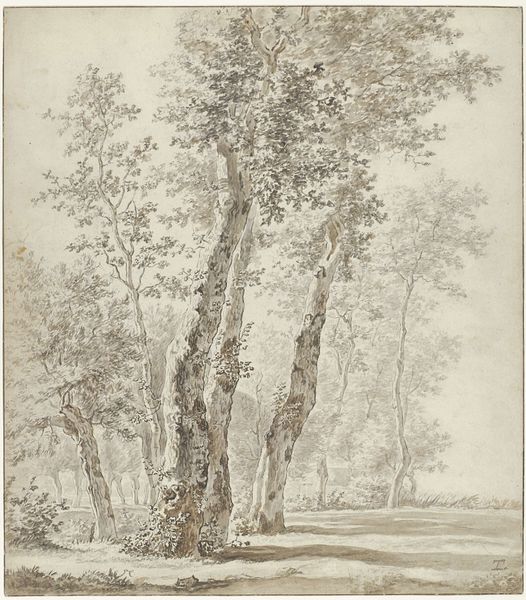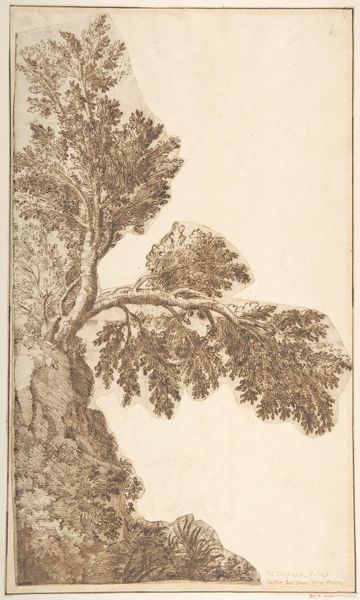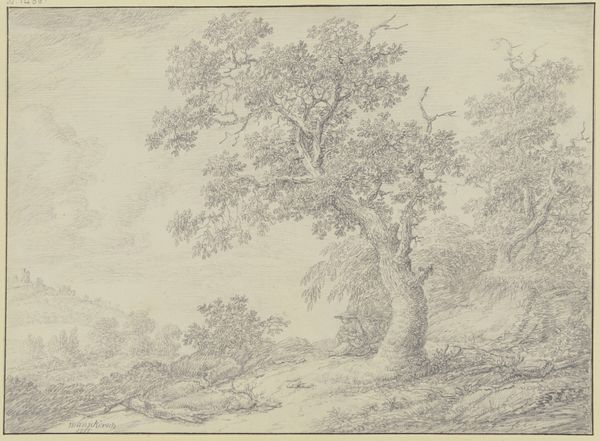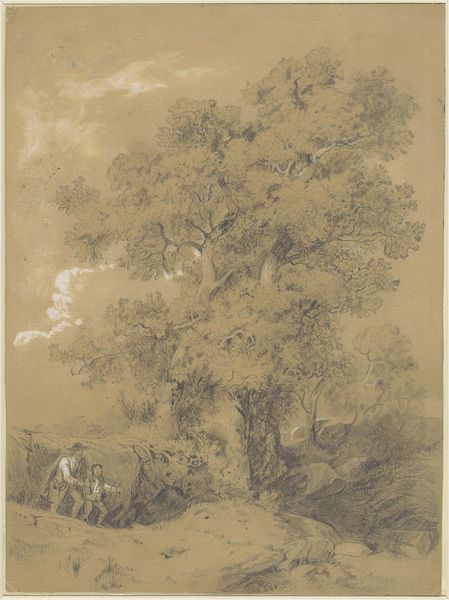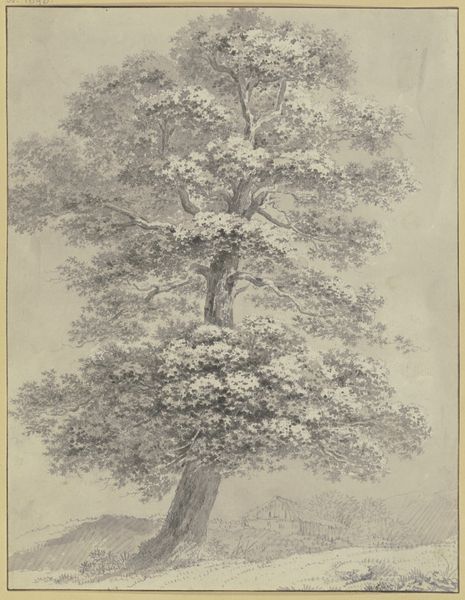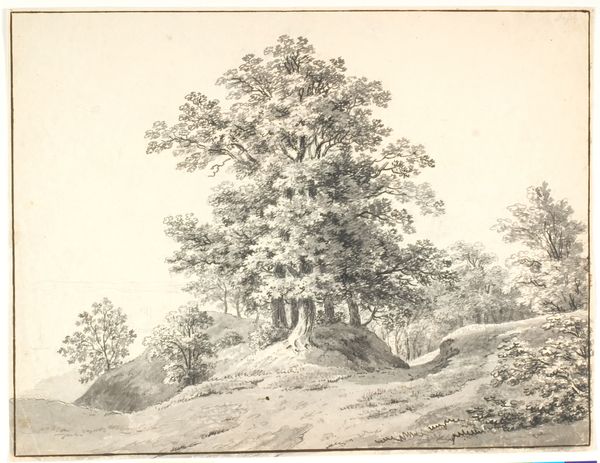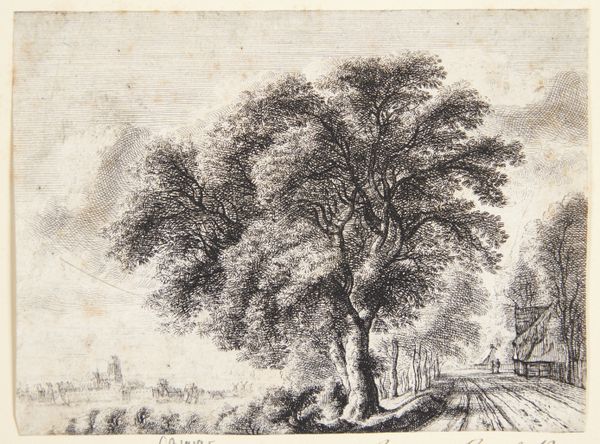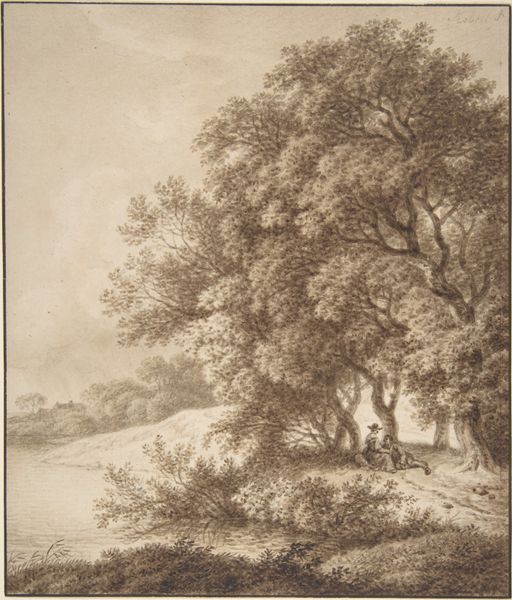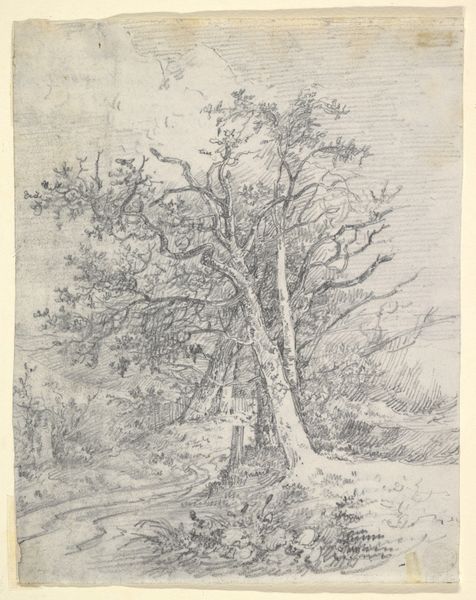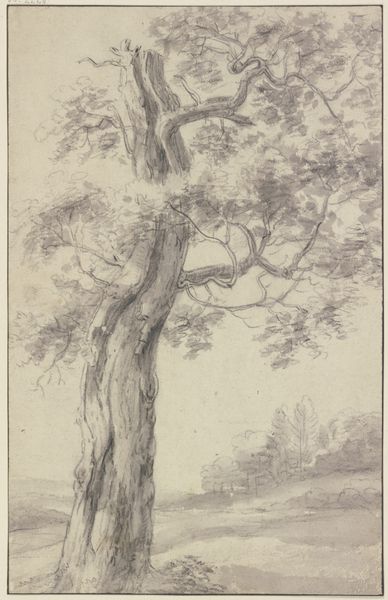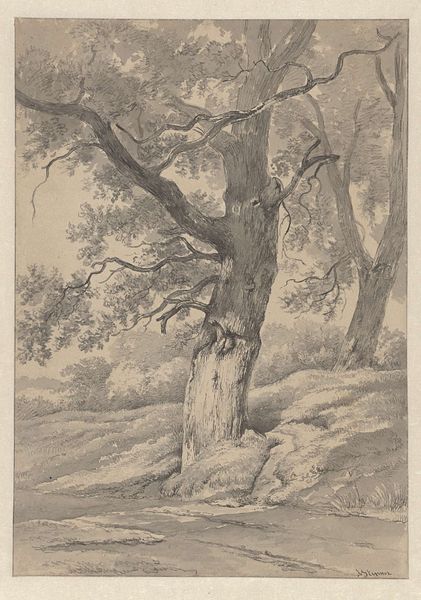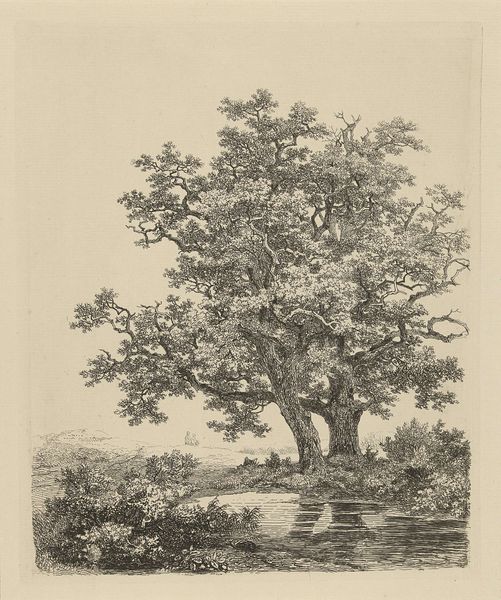
Copyright: Public Domain
Curator: Before us is Jacob Philipp Hackert’s "A Large Tree at Albano," created in 1782. Hackert captured this impressive specimen with ink and pencil. Editor: It's majestic, isn’t it? There's a serene solemnity, the kind you feel when you confront something much older, much larger than yourself. The sheer detail of the leaves is staggering. Curator: Hackert’s precision is quite striking. He renders the tree with botanical accuracy, reflecting the Enlightenment’s interest in scientific observation. Yet there's an undeniable romanticism, particularly in the tree's imposing form against the landscape. Trees have long been potent symbols... what readings does it invite in you? Editor: Immediately, it reads as a symbol of resilience. Look at the gnarled roots clinging to the earth. There's a defiance there. I'm reminded of marginalized communities who've survived against the odds, rooted in their culture despite systemic oppression. Also, considering the work was completed at a time of growing societal awareness concerning nature, I would imagine that it represents some understanding of the vital balance and dependency for natural sources for life and civilization itself. Curator: The symbolism of trees varies so widely, it becomes almost universal. You find the tree of life, the tree of knowledge… They stand for family, for interconnectedness. Editor: Precisely, but that very universality can be problematic. It risks erasing specific cultural significations. What about indigenous tree reverence practices that predate organized religion? Doesn't depicting it in such a universal way risk silencing particular, lived experiences? Curator: It is certainly important to remember specific cultural contexts and not to make universal claims. Editor: Considering it's from 1782, who was invited to witness the spectacle? I am compelled to think about landscape and who had access to it... or did not. This is where things become a little problematic, as this seemingly lovely landscape presents a romantic view of a world marred by violence. Who benefits? Curator: These nuances help enrich the meaning for contemporary audiences. The layers within Hackert’s landscape become visible—not only the artistic technique, but also the socio-historical conditions that shape our reading of it. Thank you for bringing that to the fore. Editor: Of course, and I think interrogating art in this way—pushing beyond the aesthetic—makes it relevant. Otherwise, we’re just left with a pretty tree drawing, stripped of its potential to teach us about ourselves and the world we live in.
Comments
No comments
Be the first to comment and join the conversation on the ultimate creative platform.

